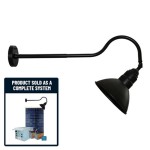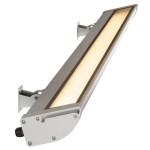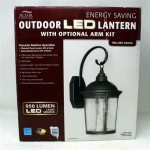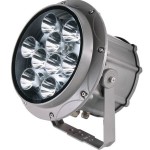How to Run a Gas Line for an Outdoor Fire Pit
Installing a gas line for an outdoor fire pit can significantly enhance your outdoor living space, providing a convenient and efficient way to enjoy a warm, inviting fire. However, this project requires careful planning, knowledge of gas line installation standards, and proper safety precautions. This article outlines the key steps involved in running a gas line for an outdoor fire pit, enabling you to make informed decisions throughout the process.
1. Planning and Safety
Before starting any work, it's crucial to plan your gas line installation thoroughly. This includes determining the fire pit's location, the gas source, and the necessary materials. Consult with local building codes and regulations to ensure your project complies with safety standards.
Safety is paramount when working with gas lines. Always wear appropriate safety gear, including eye protection, gloves, and a gas mask. Never attempt to install a gas line if you are unfamiliar with the process, and consider hiring a licensed and experienced contractor to handle the task.
Here are some essential planning considerations:
- Gas Source: Determine the source of your gas supply, whether it's a natural gas line or a propane tank. Choose the appropriate gas line materials and fittings based on the gas type.
- Fire Pit Location: Select a suitable location for your fire pit that is away from flammable materials and complies with local building codes and regulations.
- Gas Line Length: Measure the distance between the gas source and the fire pit to determine the necessary length of gas line tubing.
- Gas Line Routing: Plan a safe and efficient path for the gas line, avoiding obstacles and ensuring adequate clearance from combustible materials.
- Gas Line Sizing: The diameter of the gas line tubing should be chosen based on the fire pit's gas consumption rate and the distance from the gas source. Consult a certified gas installer for appropriate sizing recommendations.
2. Material Selection and Preparation
The materials you use for your gas line are crucial to ensure safe and efficient operation. Choose the appropriate materials based on the type of gas and local regulations. Common materials include:
- Copper Gas Piping: Type L copper tubing is often used for gas lines, offering excellent corrosion resistance. However, ensure it is suitable for the gas type you are using.
- Black Iron Pipe: Black iron pipe is a durable option, but it requires additional protective coatings to prevent corrosion.
- Flexible Gas Line: Flexible gas line is often used for shorter runs and connections, providing convenience and flexibility. Consult the manufacturer's specifications for the appropriate usage.
- Fittings and Connectors: Choose gas-rated fittings and connectors compatible with the gas line materials you select.
Once you have gathered the necessary materials, carefully prepare them for installation. This involves cleaning the gas line tubing, removing burrs, and assembling the fittings as needed.
3. Gas Line Installation
The gas line installation process involves several steps, requiring careful attention to detail and adherence to safety procedures. Here is a general outline:
- Dig a Trench: If burying the gas line, dig a trench with a depth of at least 24 inches. Ensure the trench is properly sloped, allowing water to drain away from the gas line.
- Connect to Gas Source: Connect the gas line tubing to the gas source using the appropriate fittings and connectors. Consult a licensed gas installer for guidance on proper connection techniques.
- Run the Gas Line: Carefully lay the gas line tubing in the trench or along the designated path, ensuring proper clearance from obstacles and combustible materials. Secure the tubing with clamps or straps at regular intervals.
- Install Fittings and Connectors: Use appropriate fittings and connectors to create bends, connect sections of tubing, and connect to the fire pit. Ensure all connections are tight and secure.
- Pressure Test: After installing the gas line, perform a pressure test to ensure the system is leak-free. This test should be conducted by a certified gas installer to guarantee safety.
- Backfill Trench: If burying the gas line, backfill the trench with compacted soil or gravel, protecting the gas line from damage.
- Connect to Fire Pit: Connect the gas line to the fire pit using the appropriate fittings and connectors. Ensure the connection is secure and meets the manufacturer's specifications.
After completing the installation, ensure all connections are properly secured, and the gas line is leak-free. Always refer to local codes and regulations for specific guidelines related to gas line installation, and consider consulting a licensed gas installer for guidance and expertise.

How To Build A Gas Fire Pit Woodlanddirect Com

How To Build A Gas Fire Pit Woodlanddirect Com

How To Build A Gas Fire Pit Woodlanddirect Com

Natural Gas Line Installation Portland Barbecue

Gas Pipe Size For Fire Pits

How To Build A Gas Fire Pit Woodlanddirect Com

How To Install A Log Lighter Fireplace Gas Starter Pipe

How To Install A Gas Fire Pit

How To Hide A Propane Tank From Your Patio S Fire Pit The Diy Playbook

How To Build A Gas Fire Pit Woodlanddirect Com







